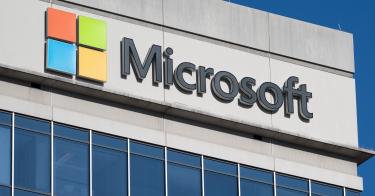America may be entering a new phase of economic malaise.
While inflation dominated the public consciousness in 2021 and 2022, troubling developments in the labor market offer a worrisome sign of what 2023 might hold.
A wave of layoffs hit technology companies this month. Amazon announced this month that it would lay off 18,000 corporate employees. At the same time, Google will shed 12,000 jobs, Microsoft will slash 10,000, Salesforce will lay off 8,000, and IBM will cut almost 4,000.
Smaller companies haven’t garnered the same headlines, but they’re in a similar boat.
Layoffs are also beginning to hit other mostly white-collar industries, such as finance and real estate.
Most recessions begin with layoffs at the bottom and work their way up. If recent layoffs presage the beginning of another recession and more widespread job losses—as most corporate CEOs predict—it’s unusual that high-paid tech workers would be among the first jobs cut.
But then again, it’s unusual for the interest rate on prime loans to more than double from 3.25% to 7.5% in a matter of months.
When borrowing costs soar, investments in long-term projects, such as research and development, are among the first things companies cut from their budgets.
It doesn’t help matters when businesses simultaneously face new, unfavorable tax treatment for incurring research expenses.
Until last year, businesses could deduct research and development expenses in the year they incur the expense—just the same as they can for most other business expenses. But starting in 2022, companies now must spread such tax deductions out over five years.
Beginning this year, companies are also set to gradually lose the ability to fully and immediately deduct the costs they incur on most capital expenditures, such as factory machinery and office equipment. Instead, companies will return to depreciation schedules of as long as 20 years.
Punishing businesses for installing factory equipment or researching new technology is economic malpractice. These types of investments help build the economy and create a better future for Americans.
Businesses making such investments shouldn’t also have to give the government a de facto interest-free loan, especially in a high interest rate environment. The unfortunate reality is that punishing investments in research and physical capital will lead to reduced investment, fewer high-paying jobs, and stunted economic growth.
Research and development expenditures have steadily slowed over the past two years even as the White House touts “the development of a rapid innovation agenda to make equitable and efficient electric options available for everyone.”
Congress and the administration last year lavished at least $369 billion of additional tax credits, grants, and other subsidies for green energy, electric vehicles, and other pet climate projects of the Left. But this federal spending agenda, run through the tax code, isn’t boosting research and innovation, it’s just crowding out more promising investments in other industries.
Such socialistic government planning doesn’t merely shift around resources, it causes there to be fewer resources to go around, especially in the long run, as sound investments are forgone and never bear their fruits.
But don’t take my word for it that the green agenda will sap economic growth and make people poorer. Just listen to the not-so-secret cabal of left-wing environmental fearmongers at the World Economic Forum, who openly discuss a vision of a post-growth economy or even the need for degrowth.
As U.S. climate envoy John Kerry explained, the only way to advance their vision is with “money, money, money, money, money, money, money.”
That’s a not-so-tacit acknowledgement of what most of us already knew; namely, that the green tax credits and subsidies already passed by the previous Congress will have at best an infinitesimally small impact on global temperatures, so the green activists will be back to shake down taxpayers for many trillions of dollars more.
One way or another, that money will come out of the pockets of American taxpayers and will make it harder for companies in other industries to get the funds they need to make the goods and services on which Americans rely.
The more money is funneled into government-favored industries, the less capital will be left in the market for companies to put into more worthwhile investments, from farm equipment to keep food prices down to lifesaving medical research.
More families will be priced out of a home mortgage, and others will fall into deep credit card debt.
And the more the government continues to skew the flow of capital, the more problems it will cause for entrepreneurs and innovators who drive so much of the growth in the economy. Workers and consumers will ultimately suffer.
While the unemployment rate remains low, that’s because millions of Americans remain on the sidelines not looking for work. There are still an estimated 2.8 million Americans who aren’t working nearly three years after the onset of the COVID-19 shutdowns.
Those who are employed are working far fewer hours at significantly lower inflation-adjusted wages. Americans lost $2 trillion of wealth from their 401(k)s last year.
It’s clear that the left’s big-government tax-and-spend agenda continues to fail.
But the worst consequences may be the ones we will never see: The innovative new technologies that would have changed lives that are instead crowded out to fund wind turbines or the community-enriching small businesses that are never established because federal policy pushed capital into electric-vehicle subsidies instead.
That’s all just collateral damage in the Left’s battle to control what Americans buy, what they produce, and how they live.
This piece originally appeared in The Daily Signal




